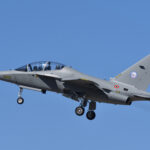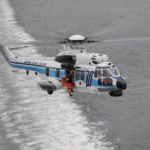HALO Space has unveiled the interior design for its new space tourism capsule, “The Aurora”.
The global near space tourism company is planning to launch stratospheric commercial flights using a balloon-lifted capsule which, after several hours peering down on Earth, will float down with the help of a parachute.
For the legendary Frank Stephenson Design agency, creating the new “Ascent” capsule was “about as exciting as it gets for a design team”.
Speaking at the launch event attended by FINN, Frank Stephenson said: “This is about the thrill of moving forward in another step for humanity. But it is also a learning experience.
“They say there is no planet B, but there might have to be one day, so we better starting thinking about it.”
HALO Space and Frank Stephenson Design have prioritised already-certified components in the build of their capsule design, in lieu of in-house development.
The capsule will be 5 metres wide and 3.5 metres tall, made of aluminium alloy and composite materials for a total take off weight of 3,500 kilograms.
The spaceship will house eight passengers and one pilot, with large viewing windows at 2.82 square metres.
Key components of space travel, from weight distribution to materials used to industry regulations, were all considered by the design team alongside HALO partners before any stylistic choices were considered for The Aurora.
A crewed prototype flight is planned for 2025 before commercial operations begin in 2026.
Stephenson, who spoke to FINN last year about his design practice, added that with safety a top priority for the design and engineering teams, he was willing to be on the first capsule to be sent into space.
The capsule will be brought to the edge of space via a helium balloon, creating an easy ascent with no increased G-forces.
Each trip will average a 4-6 hour flight time, with 1-2 hours at a maximum altitude of up to 35 km.
HALO plans to begin offering commercial flights starting at $164,000 — a fraction of the price of orbital and suborbital flight offerings, with the goal of 10,000 passengers serviced by 2030.
To make space tourism more accessible, HALO Space is also currently developing a programme that would remove financial barriers for those passionate about space exploration who cannot afford the ticket price.
“In 2030, when we will have 4 bases, our objective it to fly a minimum of 100 flights per year,” said Carlos Mira, CEO of HALO Space, who was also speaking at the London event.
“Safety is the top priority. There are no rockets, no engines, so it avoids complexity.”
He added: “Passengers will spend up to six hours inside our spaceship, and we want every minute to be unforgettable. Frank and his team have created a capsule to enhance our flight experience, utilising unique resources, design and technology
“They went well beyond beautiful aesthetics and smart ergonomics and partnered closely with our technology partners to craft the safest and most functional vessel possible.”
The design of The Aurora takes heavy inspiration from Space Age architecture and design, with a heavy use of curved lines, curved edges, and reflective materials.
Like the arms of the Milky Way, eight seats branch out from the centre of the capsule to look out one of the largest windows in the space tourism industry.
Subscribe to the FINN weekly newsletter
You may also be interested in:
Frank Stephenson: ‘The best way to predict the future is to design it’

